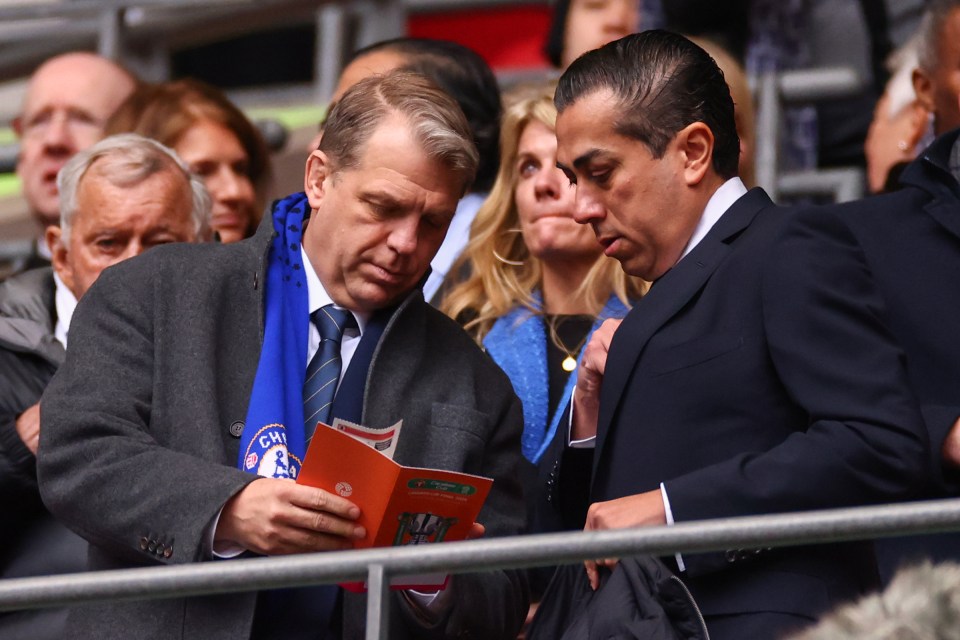CHELSEA have somehow managed to burn through an eye-watering £1.291billion over the past decade, and yet, they still look financially fit.
According to The Athletic, the west London giants have lost a staggering £354,000 a day, every single day for 10 years.
Since taking over from Roman Abramovich, who wasn’t shy about splashing the cash either — the new owners have blown over £1bn on players alone.
They’re already on their third permanent manager, after binning Thomas Tuchel just three months into the new era. Graham Potter and Mauricio Pochettino have also come and gone, with hefty compensation packages in tow.
So how have Chelsea pulled this off?
One word: creativity and a bit of financial wizardry.
READ MORE IN FOOTBALL
They’ve been dishing out eight-year deals to players, spreading the cost across the contract and keeping things neat on the balance sheet.
The Athletic also reports that the club have stayed within the Premier League’s Profit and Sustainability Rules by selling assets, to themselves.
They flogged the women’s team to another entity within their ownership group, raising £200m and magically booking a £198.7m profit. That cheeky move turned what would’ve been another big loss into a £128.4m pre-tax profit.
BEST FREE BETS AND BETTING SIGN UP OFFERS
Before that, they sold two hotels and a car park to a sister company, pulling in £76.5m in 2023 – just in time to help them pass that year’s PSR test.
Most read in Football
Add it all up, and Chelsea turned what could’ve been financial disaster into a £275.2m profit. Technically above board, cleverly within the rules.
What the PSR say
The Prem’s PSR rules are simple, clubs can’t lose more than £105m over three seasons, excluding certain deductions.
Did Chelsea really need to sell the women’s team?
Let’s assume the hotel sale was accepted in the 2023 accounts. That still left Chelsea with £281.8m in losses over the 2022–2024 PSR cycle-way beyond the £105m limit.
However, deductions like depreciation on non-football assets £43.5m and £41.4m spent on the women’s team come off that total. Add in some leeway for community spending and other allowable costs, and suddenly it’s not such a huge gap.
On paper, Chelsea are still in the green.
But UEFA wont be that friendly. UEFA play by stricter rules.
Their version of Financial Fair Play only allows for £68m in losses , and they frown upon sales to sister companies.
That wipes away the £275m accounting trick, and leaves Chelsea on shaky ground.
UEFA also limit player amortisation to five years – meaning that £100m man Moises Caicedo, who was signed on an eight-year deal, adds £7.5m more per year to the UEFA books.
So, while Chelsea might be surviving the Premier League’s scrutiny, they’re in a much tighter spot when it comes to Europe.
Where the wage bill stands ?
Chelsea’s wage bill for 2023–24 was a whopping £338m, still the fourth-highest in the league, and just £2.2m down on 2021–22.
In between, it peaked at £404m, one of only two English clubs ever to go above the £400m mark.
That included payouts to Tuchel and Potter, plus their coaching crews. Pochettino’s exit added more.
The club are also massive employers – admin staff rose from 646 to 773, making them the third-biggest employer in English football, just behind United and Liverpool.
Despite a nine per cent revenue drop, the wage-to-turnover ratio improved slightly to 72 per cent, down from 79 per cent. Strip out Poch’s payoff, and it drops to 70 per cent — still only the 12th best in the league.
What do Chelsea need badly to keep going?
Read More on The Sun
Champions League football – urgently.
Like many of England’s top clubs, Chelsea need the UEFA money to keep day-to-day losses in check. Without it, the creative accounting may not be enough to keep the lights on.
Join SUN CLUB for the Chelsea Files every Tuesday plus
in-depth coverage and exclusives from Stamford Bridge











